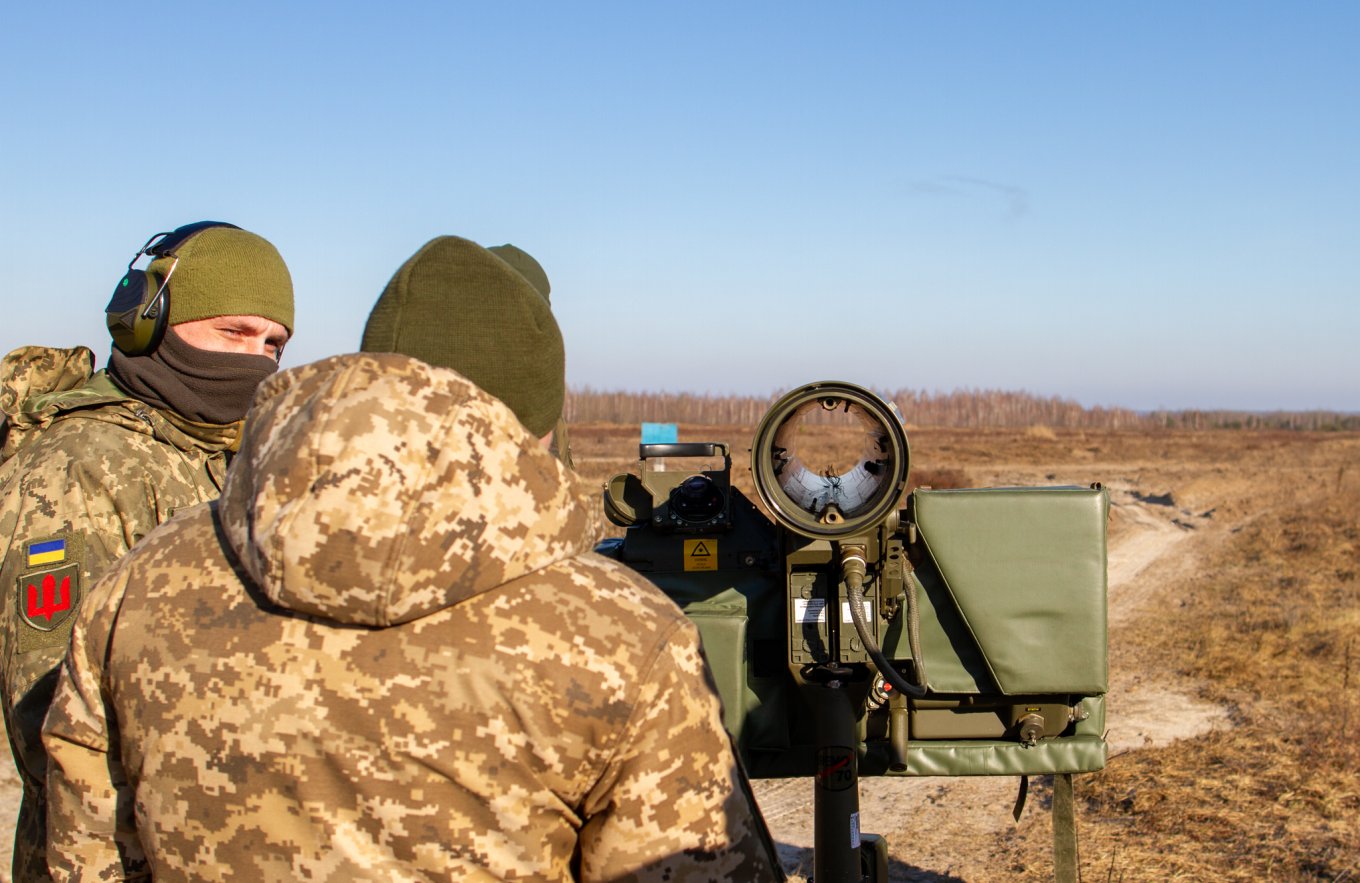Ukraine has received RBS-70 man-portable air-defense systems (MANPADS) that Sweden promised in August last year. This will possibly give Ukrainians a credible defense against Geranium-2 loitering munitions, assuming Russia employs such drones in the future.
Developed by Swedish defense major SAAB, the RBS-70 is a unique system as it is the world’s first shoulder-fired surface-to-air missile (SAM) with a laser guidance system. This gives it significant advantages over infrared, radio frequency, or active or passive radar seekers.
However, it is unclear which version Ukraine has been given since the platform has had three different variants since it was introduced in the 1970s. The development about the Armed Forces of Ukraine (AFU) receiving the weapon was posted by the newly created 88th Separate Mechanized Brigade, which published a photo on its Facebook page on April 20.
Been Eyed By Ukraine Since 2022
The possibility of Sweden transferring the MANPAD to Ukraine had been under consideration since late-August 2022 after Ukrainian Foreign Minister Dmytro Kuleba visited the Scandinavian country. Kuleba called on Sweden to provide Ukraine with Archer artillery systems, RBS-70 air-defense systems, and more artillery shells.
“The best thing Sweden can do in the field of defense in the coming weeks is to provide Ukraine with its famous Archer artillery systems, RBS-70 air-defense systems, and more shells for our artillery systems,” Kuleba had said at a joint briefing with Prime Minister Magdalena Andersson and Foreign Affairs Minister Ann Linde in Stockholm, according to Ukrinform.
Ukraine then had already been using Swedish weapons like the Carl Gustaf and the Next Generation Light Anti-Tank Weapon (NLAW) rocket launchers.
Formidable Anti-Aircraft System
The RBS-70 platform was developed following a specific request by the Swedish Armed Forces. It wanted a missile with a long-range, unjammable, high-precision, and high hit probability.
It also was supposed to be free of vulnerability from electronic jamming and diversion via chaff dispensers and flares. Moreover, it should also be capable of hitting ground targets with the same missile, supporting systems, and launchers.

The missile follows the laser beam, emitted from the laser emitter located exactly in the missile’s nose, that marks its centerline. The rocket only moves along this path, giving it high accuracy.
“The low power used by the complex and lack of radiation before launch make it difficult to detect the RBS-70 effectively,” the Facebook post by the 88th Separate Mechanized Brigade said.
“The lack of radiation” means the absence of radio emissions because it does not have a radio frequency (RF) seeker. The laser beam guidance also allows the missile to hit incoming aerial threats from the front and not only from behind or the side, unlike an infrared homing seeker, since those aspects don’t give out ‘heat’ to be from those directions.
Only the rear of a jet is suitable for infrared homing since that is where the exhaust is. The missile, however, might not perform against jets with laser warning detectors (LWD). It is not known if any Russian jets have such countermeasures.
The absence of an RF seeker also prevents the missile from being detected by a jet’s onboard Radar Warning Receiver (RWR) and possibly the Missile Approach Warning System (MAWS). Some reports claimed the RBS-70’s technology puts it midway between a MANPAD and a Very Short-Range (VSHORAD) system.
Given its four to five kilometers range, the RBS-70 becomes comparable to established MANPADS like the Stinger, Igla, or Mistral. The RBS-70 has a significant advantage in the four to five kilometers range. Moreover, the photo posted by the brigade showed a PS-70 radar mast, the fire control radar for the RBS-70. This enhances the missile’s hit probability since it is cued to the target before launch.
Could It Be Ukraine’s Geran Drone Killer?
These capabilities also make it suitable for successfully engaging Geranium-2 (Geran-2) loitering munitions since the absence of any radio or heat emissions makes them difficult to target, according to some claims in pro-Ukrainian Telegram groups.
A report by the EurAsian Times featured a video of how a MANPAD misses a Geran-2 in a straight line shot while being fired from a building as the UAV is striking civilian-military targets in Kyiv. “Ukraine now has something that can match our Geraniums. But the question is whether they have it in enough numbers,” said a post on a pro-Kremlin Telegram group.
However, it is not known which version the AFU has received. According to Defence Express, the basic version RBS 70 Mk 0, from the 1970s, can work on targets at a range of up to 5 kilometers and an altitude of up to 3 kilometers.
In the early 1990s, SAAB introduced the RBS-70 Mk 2 variant, which had a firing range of up to 7 kilometers and could reach altitudes of up to 4 kilometers. The latest is the RBS-70 NG variant, with a range of 9 kilometers and an altitude of 5 kilometers. The Czech Republic ordered 16 units of the missile in December 2018.
- The author can be reached at satamp@gmail.com
- Follow EurAsian Times on Google News